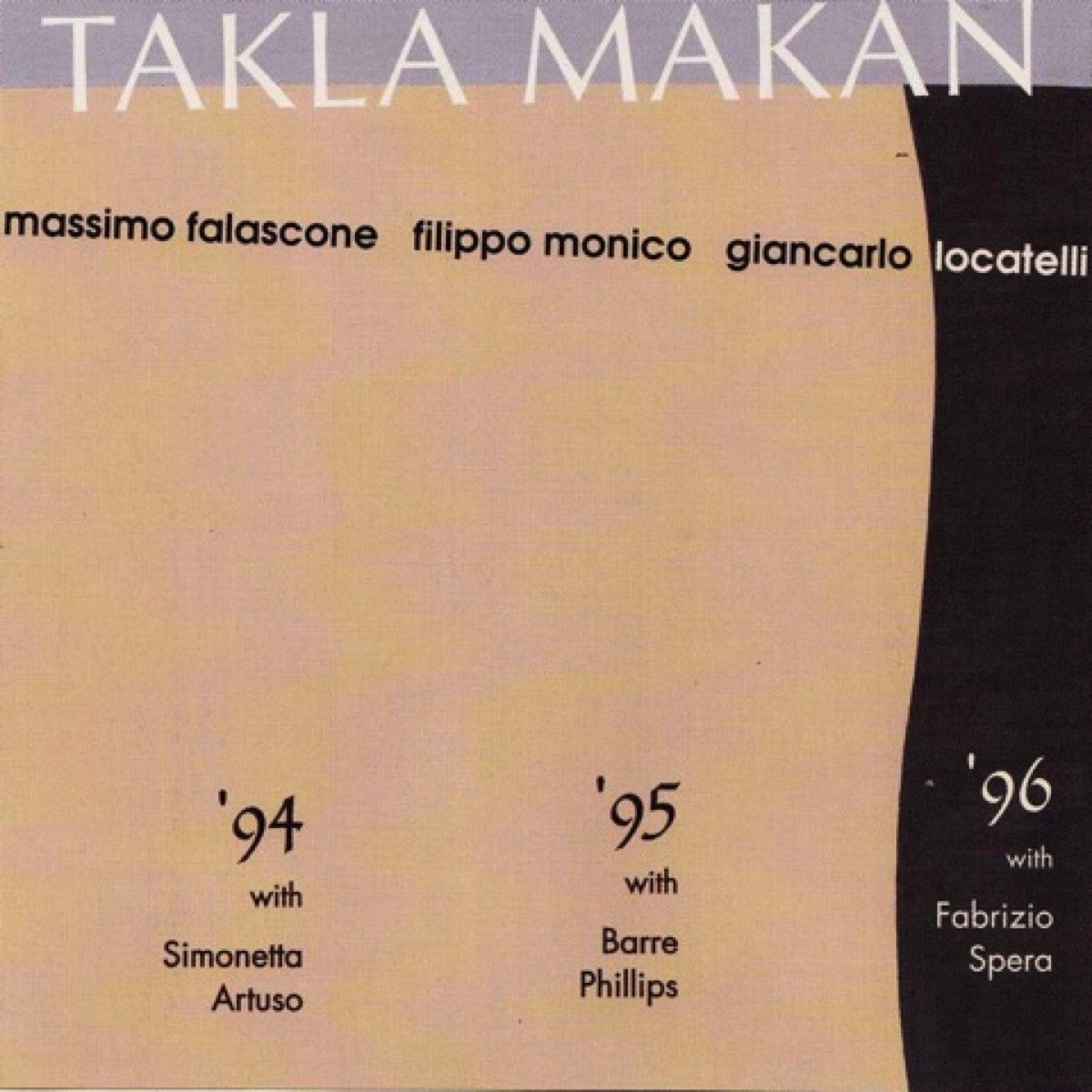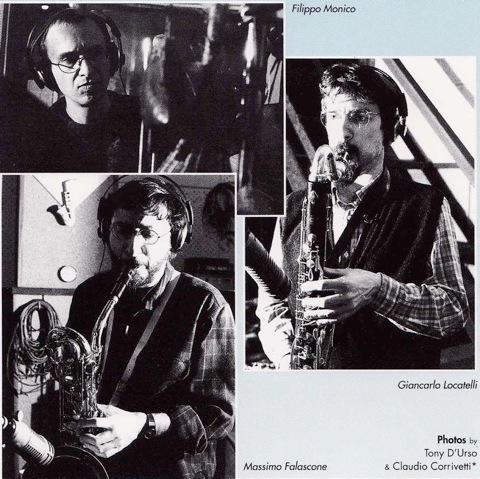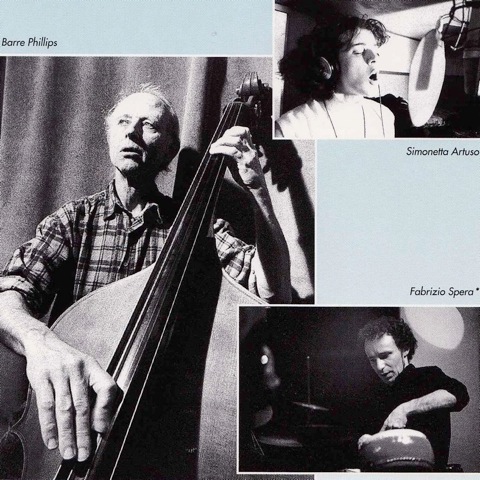
Takla Makan
Massimo Falascone - Giancarlo Locatelli - Filippo Monico
with Simonetta Artuso, Barre Phillips, Fabrizio Spera
1997, C.M.C. Records 9970-2
Massimo Falascone - alto, baritone & sopranino saxes
Giancarlo Locatelli - Bb, bass, alto & piccolo clarinets
Filippo Monico - drums
Guest Artists:
Simonetta Artuso - voice (# 2)
Barre Phillips - double bass (# 3, 4, 5, 6)
Fabrizio Spera - drums, amplified objects (# 7, 8)
01. Sven Hedin 5:53
02. Ants 4:47
03. Shamo 9:15
04. Carovana lunatica 2:26
05. Buran 8:36
06. Djinn 2:11
07. Lop Nor 16.06
08. Cammina cammina 18:43
Total time: 67:57
All tracks by Massimo Falascone & Giancarlo Locatelli
All rights reserved
# 1 - 6 recorded and mixed on May 1994 and February 1995 @ MU REC studio/Milan by Paolo Falascone
# 7 - 8 recorded and mixed on May 1996 at Filippo Monico´s basement/Milan by Fabio Martini
Artwork and graphic by Enzo De Grandi
Produced by TAKLA MAKAN and C.M.C. (Centro Musica Creativa), Torino
C.M.C. 9970-2
Dalle note di copertina:
(…) Le registrazioni qui raccolte testimoniano del percorso di ricerca e sperimentazione compiuto da Massimo Falascone, Giancarlo Locatelli e Filippo Monico, che sono i reali produttori di questo lavoro e fanno parte di quella che possiamo definire la seconda generazione di improvvisatori italiani.
(…) Nel corso degli anni, la ricerca attuata all'interno del Takla Makan, benchè improntata a uno spirito di grande libertà, si è snodata sulla base di una pratica piuttosto rigorosa dei principali materiali costituenti l'esperienza dell'improvvisazione istantanea, che è stata indagata sistematicamente e a fondo (…) In un diario sono state verbalizzate le sedute di prova che sono state sempre registrate e, a rotazione, uno dei tre ha diretto le sessioni, fornendo indicazioni, spunti o concedendo completa libertà ai compagni di lavoro. Sono stati di frequente invitati a cui è stata offerta la possibilità di dirigere la sessione. Ad alcuni poi, ed è il caso di Simonetta Artuso, Barre Phillips e Fabrizio Spera, è stato chiesto di partecipare alle registrazioni 'ufficiali'.
Questa musica, ma vale per la musica di ricerca in genere e per molte altre forme d'arte, pone l'ascoltatore di fronte e una scelta: essa si offre e si svela soltanto se la si desidera ardentemente, se si è disposti a mettere in gioco il proprio 'sistema normativo acustico', per addentrarsi nei territori della musica in cui al ' possibile umano', in un insieme infinito di varietà estetiche e grovigli espressivi. (…) L'ascoltatore ha la possibilità di prendere atto dell'identità musicale del Takla Makan e del suo svilupparsi nel corso del tempo: dalle prime registrazioni con l'Artuso, leggere e ariose, si passa agli episodi più densi e agglutinati delle registrazioni con Phillips e poi alla fase ultima, caratterizzata da un linguaggio più concreto e ritmicamente vibrante, delle registrazioni con Spera. (…)
Fabio Martini
Excerpt from the booklet:
(…) This collection of recordings testifies the constant progression of Massimo Falascone, Giancarlo Locatelli and Filippo Monico along the course of research and experimentation. The three players and producers of this work belong to what we might define the second generation of Italian improvisers. Although still relating to the jazz experience, this generation seems more inclined to develop new forms of research when compared with their ´forefathers´, who were tempted by the experience of free improvisation only to a limited extent but kept hovering dangerously between their ´profession´ and their too occasional ´experimentation´. The basis for this exclusively improvising group were laid in 1993. (…) This genre of music, as well as research music and other forms of art, forces the listener to make a choice: this music offers and reveals itself only if it is longed for, if one is ready to put into question one´s own ´acoustic standing rules´, so as to enter the territory of music where ´music possibilities´ blend with ´human possibilities´ with major cohesiveness, in a boundless set of aesthetic varieties and expressive combinations. (…)
We can see how TAKLA MAKAN has switched from the initial light and airy recordings with Artuso to the thicker and more clotted episodes recorded with Phillips to get to the final stage characterized by a more solid and rhythmically vibrating language which can be found in the recordings with Spera. (…)
Fabio Martini
Translation: Anna Coffetti


